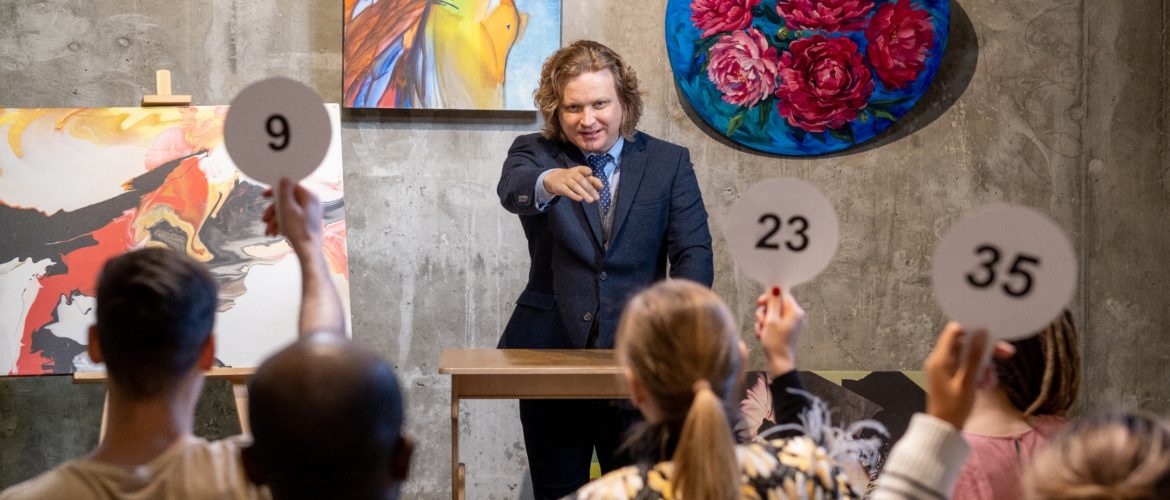Anatomy of an Art Auction: How Is Fine Art Sold and Bought?

What do you imagine when thinking about an art auction? For the majority of outsiders, it boils down to placing bids in a beautifully arranged setting or online. However, the process of organizing an auction is much lengthier, starting with the owner’s decision to sell a piece and ending with a meticulously organized process of delivering the purchase to its new owner. Here is a step-by-step guide to this vital aspect of the art market.
Preparatory Steps: Consignment
The auction process starts with a decision to sell art to another person or entity. If there is no direct inquiry about the purchase, or if the owner wants to get the most out of the competitive nature of auction sales, they contact the chosen auction house. If the art object falls within the auction house’s area of specialization and fits their focus, the parties sign a consignment agreement to fix the terms of the reserve price, auction date, auction house’s commission, and other relevant terms.
Art Cataloging and Marketing
The next step includes the artwork’s inclusion in the auction house’s catalog. These catalogs are available to the auction house’s customer base, thus increasing the visibility of new entries and improving the chances of a quick deal. The catalog entry should include high-resolution photos, provenance data, and a detailed condition report.
Pre-Auction Viewing and Bidding
As soon as the auction date is set, interested buyers apply for pre-auction viewing to see the artwork in person and make the final buying decision. Such viewing sessions are organized by the auction house to let potential buyers evaluate the piece offline and inspect its condition. The bidder registration process begins.
Art Auction
Once the list of bidders is compiled and the auction day comes, all interested buyers meet in one place to compete for the lots they’ve selected. The bidding process for each separate artwork starts with a reserve price, and bidders raise their paddles to give a note of their willingness to pay more. The highest bid wins. The auction may also be held online, with bids accepted through secure online auction platforms and by phone.
Payment and Delivery
The gavel is banged, and the sale is complete. Now, the process of arranging all invoices and documentation begins. The buyer transfers the agreed sum to the account of the auction house, ownership transfer documents get signed, and the artwork gets safely packed for its delivery to the new owner.
Here’s what the real procedure of organizing an art auction for a specific artwork usually looks like. It is a lengthy process that involves much planning and logistics to let an art object change hands.
